WARNING ICONS AND THEIR MEANING
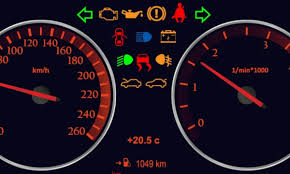
Generally speaking, the colour of a symbol relates to how urgently the problem needs to be solved and it works on a traffic light basis.
If the light is green, it often means there isn’t a problem and that a feature has simply been activated (for example the indicator or blinker lights are always green).
When a symbol with a yellow light pops up, something has definitely gone wrong, but it doesn’t need to be tended to immediately (though it should definitely be addressed as soon as you get the chance). A good example for this would be the washer fluid level. When this is too low the windscreen wipers can’t work properly. It isn’t going to stop you driving straight away, but could be dangerous in the near future.
That means of course when the red light comes up, something is seriously wrong that will affect or is already affecting the car’s
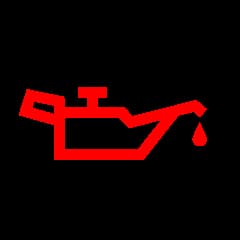 Oil Pressure Warning.
Oil Pressure Warning.
This picture of an old fashioned old can lets you know that there is a problem with your car’s oil pressure system. It could be that you are running low on oil or that not enough fluid is being cicculated by your oil pump to effectively lubricate the inside surfaces of your car. If this isn’t dealt with quickly, you’ll quickly find that your engine begins to be worn down and this could be very costly.
You should: Check your oil level and pressure.
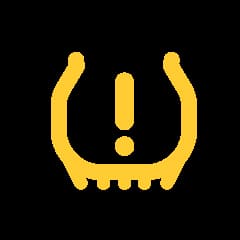 Tire Pressure Warning Light.
Tire Pressure Warning Light.
This dashboard warning signal tells you that the pressure in one or more of your tyres is too low and it needs to be dealt with. Also known as the TPMS symbol, it is a pretty important icon. Driving with low tyre pressure can be extremely dangerous as it hugely increases the likelihood of a tyre blowing out as you are driving, meaning you could lose control of your vehicle and put yourself at risk. Even if this worst case scenario doesn’t happen, low tyre pressure also has a negative impact on fuel economy and causes your tyres to wear out too quickly. Putting a bit more air in those tyres could save you a lot of money in the long run.
You should: Check the pressure of all of your tyres and increase it where necessary (it should normally be between 30 and 35 psi). Cold weather can cause the pressure to drop, so make sure you check regularly.
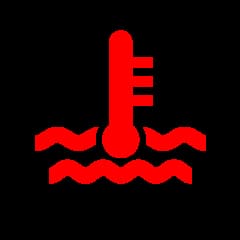 Engine Temperature Warning.
Engine Temperature Warning.
When this symbol appears on your dashboard, it means that your engine has overheated. A common cause for this is a lack of or a problem with the coolant (antifreeze) in your engine, but there can be other reasons as well such as a broken water pump or issues with your car’s radiator. It’s really important to address this problem immediately, as an overly hot engine could cause pistons and cylinders to be warped or the engine block to crack, causing some seriously hefty damage.
You should: Ensure that you have enough coolant and if the problem persists check with an expert.
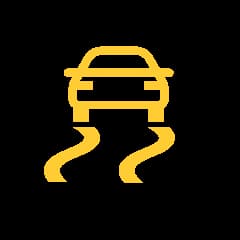 Traction Control Light.
Traction Control Light.
If your car’s traction control system is activated, you will see this dashboard symbol. The traction control system uses the anti-lock brake system to determine if one of your wheels is spinning faster than the others. It will apply the brakes if it senses that a wheel is slipping and then you will have traction again. It’s really useful for driving in rain or snow and it might help indicate to you that the road conditions are more treacherous than you though and that you should consider slowing down.
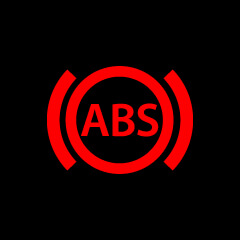 Anti-lock brake warning light.
Anti-lock brake warning light.
This might seem like a warning symbol that’s pressuring you to go to the gym more often, but it is actually letting you know you have a problem with your anti-lock brakes. As we know, anti-lock brakes work to keep your car safely in contact with the road, so if there’s a problem with the system it’s important to get to the bottom of it as soon as possible (or all that hard work on your abs will have been for nothing). It’s worth bearing in mind that every time you turn on your vehicle, the system performs a self-check, and may light up for just a few seconds. If this goes vanishes straight away, however, you’re good to know.
You should: Get your system looked at by an expert if the light is persistently there.
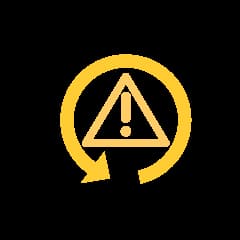 Traction control malfunction.
Traction control malfunction.
This warning icon indicates that your vehicle’s traction control system might have a broken or damaged sensor or another problem. In some cars, the same control module operates the anti-lock brakes and the traction control system, so the light sometimes comes on when there are problems with your ABS.
You should: Once more, get it checked out by an expert as it may need to be recalibrated.
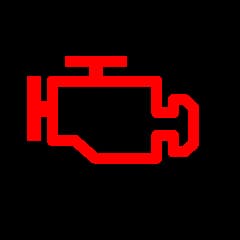 Engine Warning.
Engine Warning.
Also known as a ‘check engine light’, when this symbol lights up on your dashboard, it’s usually accompanied by a sinking feeling in the pit of your stomach. The light could be a minor issue, such as a faulty gas cap, or it could mean something more serious, such as a misfiring engine. In many cases, it means that you’ll be visiting the car dealer to repair the issue and get the problem sorted out promptly.
You should: When you see the light the best thing to do is to stop the car, pull over to the side of the road, and to check your gas cap and other systems. If the light is flashing, you should definitely stop driving. In most vehicles, the flashing check engine light lets you know that the problem is relatively serious and is going to cause some pretty serious damage if you try and bury your head in the sand and ignore it.
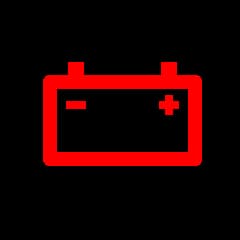 Battery Alert.
Battery Alert.
From this warning symbol we can tell that there is a problem with the car’s charging system. The symbol might be misleading, though, as the problem might not lie with your battery. It could mean that the battery cable is loose or damaged, but it can also tell you that your alternator belt is broken. There are some tell tale signs if it’s your battery: the clock display might start to fade and the headlights might start to dim. If you wait too long, your vehicle can shut down completely or refuse to start – very frustrating before the morning commute! It’s best not to ignore it.
You should: Make sure your battery is fully charged.
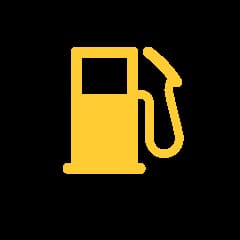 Low Fuel Indicator.
Low Fuel Indicator.
This is a pretty obvious symbol that most drivers are familiar with and it simply means that you are running low on fuel and need to fill up. While it might seem like an adventurous idea to see if you can make it home without filling up, it’s not a good idea if you have a long way to go. Who knows what will happen to the weather or the traffic, so do yourself a favour and fill up as soon as you can.
You should: Find the nearest garage or gas station. Simple!
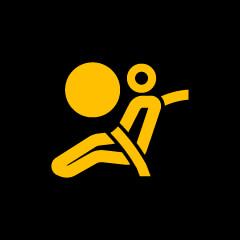 Airbag Indicator.
Airbag Indicator.
This symbol lets you know that there is a problem with your airbags, either one of them or the system as a whole. Your car’s airbags keep you safe when you have an accident and it is imperative that you address this issue as soon as you can. Do not wait to find out what the problem is!
You should: check your airbags or take the car to a specialist who can help with the problem.
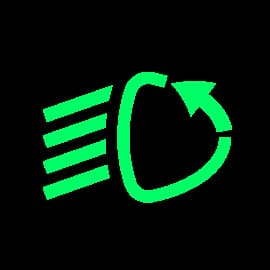 Fog Light Indicator.
Fog Light Indicator.
If you’re navigating your way through some difficult weather conditions and using your fog lights, you will see this symbol. It’s important to note though, that fog lights should only be used if your visibility is less than 100 meters, otherwise it could be blind other road users and be a hazard.
You should: Check you need to be using your fog lights and if you don’t, switch them off.
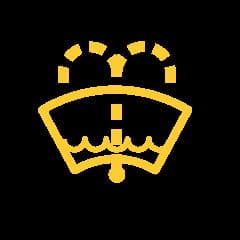 Washer Fluid Indicator.
Washer Fluid Indicator.
This dashboard warning icon is a fairly simple one to understand – you don’t have enough fluid in the reservoir for you windshield wipers to function properly. This isn’t going to stop the car from running of course, but it is important to be able to have a clean and fully transparent windshield.
You should: Fill it up as soon as possible.

 Loading..
Loading..